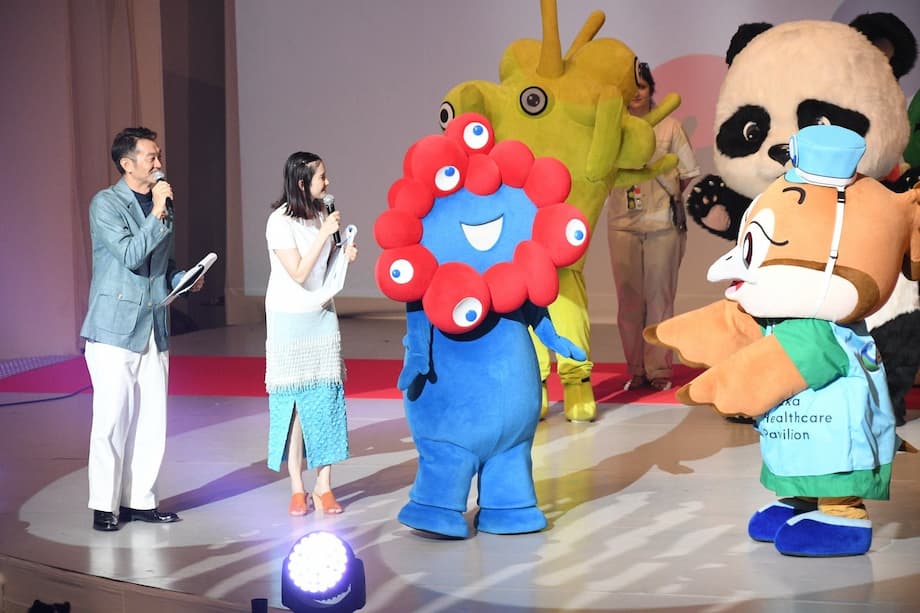A surprise result at a packed celebration
With the 2025 Osaka Kansai Expo in its final stretch, a lively celebration on the main stage brought together a full cast of characters that have become part of many visitors daily photos and memories. Forty six costumed mascots, from animals to fantasy creatures, marched, posed, and danced. A parade, a multicultural fashion show, and a brass band performance set the tone. Local leaders took the stage to thank staff and volunteers. DJ Hello Kitty made a cameo, turning the gathering into a pop culture moment that drew waves of cheers from the crowd.
- A surprise result at a packed celebration
- Who is Circular and why did it win
- Myaku Myaku from internet meme to merchandising star
- Inside the Expo finale event
- What the results say about visitor engagement
- How big is Expo 2025 and why mascots matter
- Across the pavilions, mascots carry stories
- Why Germanys Circular resonated
- What comes next for the mascots
- Key Points
The most talked about segment was a popularity poll to crown the character that left the biggest impression on guests. Many assumed the official Expo mascot, Myaku Myaku, would run away with the top spot after months of nonstop attention and merchandise across the venue. Instead, the win went to Circular, the mascot of Germany. The result surprised many onlookers and delighted fans of the underdog. Circular is a bubble like cherub that stands for the principle of a circular economy, a model where materials are reused and recycled for as long as possible.
There is only one Circular costume at the site, which gave it a special air of rarity whenever it appeared. Visitors were encouraged to design their own digital Circular on the German Pavilion website, a small interactive twist that let guests leave a personal stamp on the mascot. Reactions across social platforms trended positive. Many fans described Circular as cute and disarming. Organizers did not release the full ranking, spotlighting the winner rather than creating a long winners list.
Who is Circular and why did it win
Circular is designed around soft spheres and friendly proportions. That simple shape language matters in a crowd. You can spot it instantly in group photos, and children gravitate toward it. The idea behind the name shows a direct link to Germanys message at the Expo. A circular economy keeps products, components, and materials in use at their highest value for as long as possible. It reduces waste, promotes repair and reuse, and treats recycling as a last step rather than the only step. Circular the character distills that broad concept into something playful and approachable.
Circular in the German Pavilion experience
At the German Pavilion, the mascot experience is not just a costume encounter. Guests were invited to customize a digital Circular that mirrored the pavilion theme. That let families carry a piece of the pavilion narrative back to the hotel or home. The fact that only one physical costume appeared on site boosted the mascot sense of specialness. People shared sightings online, which created a treasure hunt feeling. The mascot gained visibility without feeling overexposed.
Myaku Myaku from internet meme to merchandising star
Myaku Myaku has been the public face of the Expo since the gates opened. You see it in souvenir shops, on signage, and in photo spots across the ring shaped grounds. It has an unmistakable look that ties back to the Expo logo. Myaku Myaku merchandise has been a reliable hit with visitors, from plush toys to stationery. That level of presence, while great for branding, can work against a character in a one off popularity vote where novelty often wins the day.
The visual lineage stretches back several years. The Expo unveiled its bold, asymmetrical logo before the event began, and early reactions online ranged from shock to fan art. The sinuous, cellular style carried through to the mascot. Over time, Myaku Myaku shifted from conversation starter to an endearing symbol on bags and parades.
The Bureau International des Expositions, the intergovernmental body that oversees World Expos, describes Myaku Myaku in official materials.
The official mascot, Myaku Myaku, is inspired by the Expo logo and water, symbolizing fluidity and continuity.
That concept meshes with the Expo theme of life and connection. Even so, in a vote shaped by fresh buzz and scarcity, the steady favorite can be edged out by a newcomer with a simple face and a timely message.
Inside the Expo finale event
The stage show that set up the mascot vote worked as a snapshot of what the Expo has been offering since April. A multicultural fashion show showcased traditional attire and contemporary design. The Osaka Toin High School Brass Band delivered a tight, upbeat performance that drew applause from families and school groups gathered around the main stage. City and prefectural leaders thanked staff, international participants, and the thousands of attendants who kept pavilions moving smoothly.
Then the costumed characters took over. Forty six mascots filed in from different directions and converged for photos. They represented a spectrum of national themes, corporate pavilions, and partner groups. DJ Hello Kitty dropped in for a high energy segment that had the crowd waving and filming. The vote announcement capped the sequence. Organizers chose not to publish places beyond the winner, which kept the mood celebratory and avoided turning the event into a scoreboard. Circular lifted a hand to the crowd, Myaku Myaku posed nearby, and the cameras kept clicking.
What the results say about visitor engagement
Surprise winners often point to the power of discovery. Many guests did not expect to encounter Circular, then realized it stood for a clear idea and had a friendly, toy like shape that photographed well. The visual clarity helped it stand out in group shots. That natural shareability feeds online momentum fast during a live event.
There is a flip side for dominant mascots. When a character appears on almost every shelf and sign, the novelty factor drops. In a casual vote, people may lean toward the character that still feels like a find. The field of mascots at the Expo is large and diverse, so a fresh look can win attention even against a famous rival.
From a marketing perspective, three traits often predict mascot engagement: scarcity, story, and shareability. Circular checked all three. The costume was rare on site, the message tied to a hot topic in sustainability, and the design works in a single glance. Myaku Myaku is still the anchor of the event, but this vote captured a burst of affection for a newcomer.
How big is Expo 2025 and why mascots matter
Expo 2025 Osaka Kansai opened on April 13 and closes on October 13. The theme is Designing Future Society for Our Lives, with three sub themes that center on health, empowerment, and connection. Participation includes more than 150 countries and international organizations. The site on Yumeshima, an artificial island in Osaka, is defined by a grand circular roof known as the Ring that links zones and provides shade. Pavilions present technology, culture, and ideas for more sustainable ways of living.
In its official overview, the Bureau International des Expositions describes the mission of the event.
The Expo provides a platform for people worldwide to explore the theme of life, fostering interaction among diverse values and resulting in new networks and creative endeavors.
Visitor management has been a core focus. A reservation and lottery system helps pace entries to popular pavilions. Crowd expectations have been high, with projections that the event will attract many millions of visits before closing. Ticket sales surpassed the level needed to cover operating costs during the summer, a key milestone after early worries about construction schedules and advance sales. On site, the calm of the Ring, a strong line of food options, and frequent live shows keep foot traffic spread out throughout the day.
Ticket sales and crowd patterns
Lines build early for the most talked about exhibits, and families often plan blocks of the day around those entries. Many visitors collect pavilion stamps in a booklet, and the Expo arena hosts occasional live events that give large groups a place to rest. The mascot presence helps pace the day, since it creates small, joyful pauses for photos and meet and greet moments across the site.
Across the pavilions, mascots carry stories
The mascot lineup at the Expo stretches well past the two headliners. National pavilions and partner groups use characters to express themes in a way that travels across language. Some lean on national animals or symbols. Others embrace playful creatures designed to grab attention in the short time a visitor passes by. The result is a lively, moving gallery of design choices from around the world.
Czechia’s René is one example that drew notice. The character reflects the country legacy in glass art while nodding to Japanese pop aesthetics. Organizers describe René as a friend of Myaku Myaku, which underscores how nations use mascots to build friendly ties on the ground.
René is a crystalline being, as friendly and playful as glass itself, originating from the Czech Republic galaxy.
René appears on staff uniforms and even a special postage stamp, which shows how a pavilion mascot can travel through design, music, and merchandise. Europe has a visible presence across the grounds. Visitor buzz around several European pavilions has remained strong in recent months, with long lines at peak times.
Why Germanys Circular resonated
Germany tied its character to a simple idea that guests encounter at many pavilions: reduce waste, keep materials in use, and think in loops rather than straight lines of make, use, discard. Circular took that concept and gave it a friendly face. The rounded silhouette reads clearly from a distance and works in any lighting. The name connects directly to the subject matter without clever wordplay. That clarity places less burden on signage and more on the delight of the moment when a child runs up for a picture.
The mascot also benefited from timing. As the Expo reached its later months, more people had shared photos and short clips. Each new visitor arrived with a mental checklist of must see characters. Circular became one of those targets, which fed back into its visibility. Myaku Myaku remains the hallmark of the event, and its presence will likely outlast the fair. The win simply shows how a compact message, delivered with charm, can carry a single vote.
What comes next for the mascots
The Expo remains open until October 13, and the final weeks tend to compress demand into fewer days. Weekend lines will stretch. The characters will still appear across stages and plazas, giving late visitors a chance to collect the photos they hoped for. Organizers may fold Circular and Myaku Myaku into closing sequences, since both characters now represent major threads of the story told on the site.
Discussions around the legacy of Expo features, such as preserving parts of the Grand Ring, will continue after the gates close. Mascots will live on through merchandise and museum displays, and through the photos now stored on millions of phones. They turned abstract themes into instant, human scale moments. That is the job of a good Expo character, and this vote shows how well it can work.
Key Points
- Germanys mascot Circular won the Expo 2025 Osaka Kansai mascot popularity poll, ahead of official mascot Myaku Myaku.
- Circular represents the idea of a circular economy and was a rare sight on site, which boosted its appeal.
- Organizers did not release the full ranking, keeping the focus on celebrating the winner.
- Myaku Myaku remains the face of the Expo, with strong merchandise sales and constant visibility.
- The Expo runs from April 13 to October 13 and features participation from more than 150 countries and organizations.
- The BIE describes Myaku Myaku as inspired by the logo and water, symbolizing fluidity and continuity.
- Czechia’s René and many other mascots show how characters carry national themes in friendly ways.
- Ticket sales surpassed the break even level during the summer after early concerns about construction and advance sales.
- Mascots support crowd flow by creating joyful photo moments and shareable encounters across the site.
- The final weeks will keep characters in the spotlight as part of stage shows, parades, and closing festivities.




